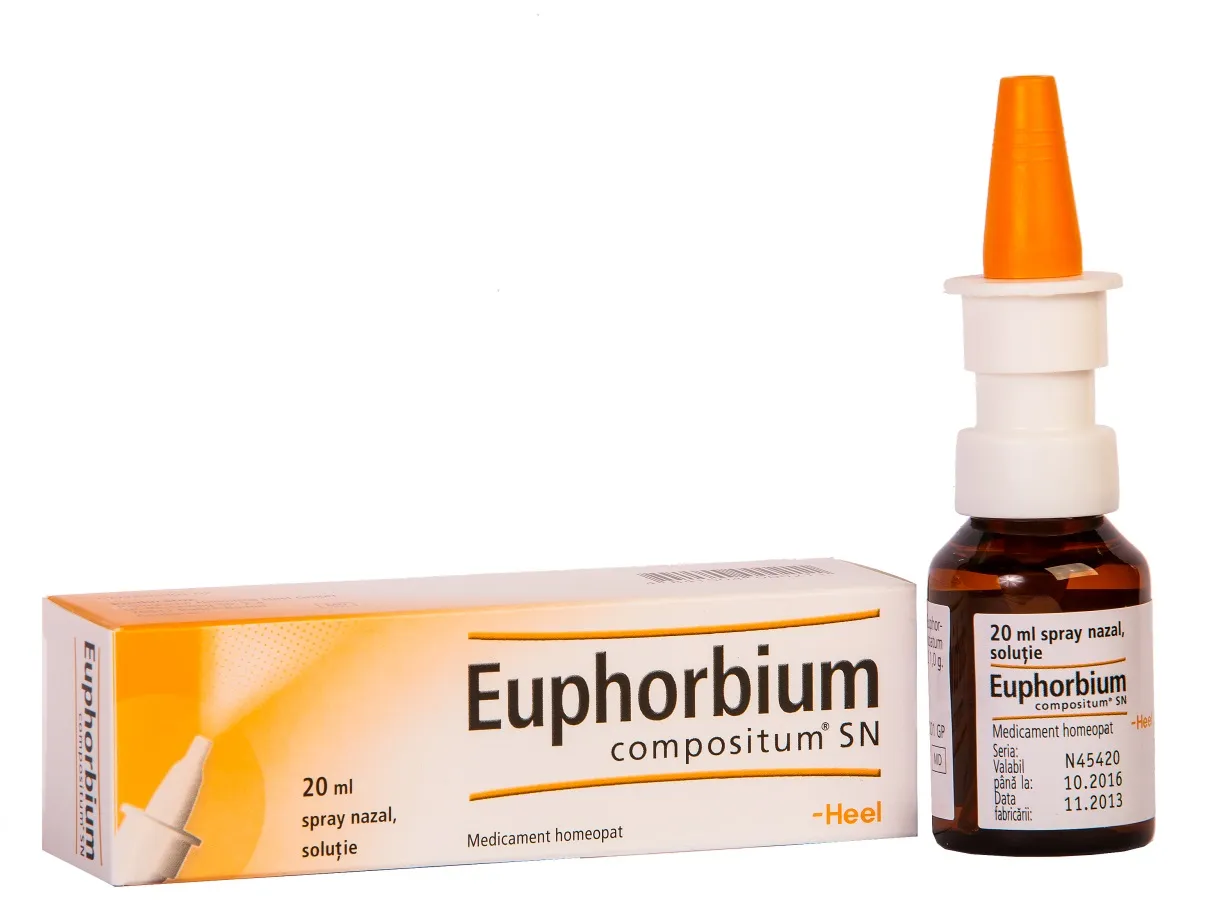Description
Euforbium Compositum Nazentropfen S Spray 20 ml
Composition
Euforbium Compositum Nazentropfen S Spray 20 ml contains a blend of natural ingredients including Euphorbium, Luffa operculata, and Mercurius bijodatus.
Mechanism of Action
Pharmacologically, Euforbium Compositum Nazentropfen S Spray acts by reducing inflammation in the nasal passages, promoting drainage, and relieving congestion. The natural ingredients work synergistically to target the underlying causes of nasal discomfort, providing long-lasting relief without the side effects associated with traditional decongestants.
Indications for Use
Euforbium Compositum Nazentropfen S Spray 20 ml is indicated for the relief of nasal congestion, sinusitis, and rhinitis.
Contraindications
Contraindications: Do not use if you are allergic to any of the ingredients. Consult a healthcare professional before use if pregnant or breastfeeding.
Side Effects
No common side effects have been reported with the use of Euforbium Compositum Nazentropfen S Spray. However, if you experience any unusual symptoms, discontinue use and consult a healthcare provider.
Usage Instructions
Dosage: Adults and children over 12 years: 1-2 sprays into each nostril 3-5 times daily. Shake well before use. Insert the nozzle into each nostril and spray as directed. Avoid contact with eyes.
Benefits Compared to Analogues
Compared to conventional nasal sprays, Euforbium Compositum Nazentropfen S Spray offers a gentle yet powerful solution for nasal congestion and related conditions. Its natural ingredients provide effective relief without the common side effects of traditional decongestants.
Suitable Patient Groups
Euforbium Compositum Nazentropfen S Spray is suitable for adults and children over 12 years of age. It is well-tolerated and safe for use in the elderly population as well.
Storage and Shelf Life
Store Euforbium Compositum Nazentropfen S Spray in a cool, dry place away from direct sunlight. Keep out of reach of children. Do not use the product after the expiration date printed on the packaging.
Packaging Description
Euforbium Compositum Nazentropfen S Spray 20 ml is packaged in a convenient spray bottle for easy application. The packaging is designed to maintain the integrity and efficacy of the product.
Clinical Evidence and Proven Effectiveness
Clinical studies have shown that the ingredients in Euforbium Compositum Nazentropfen S Spray have anti-inflammatory and decongestant properties, providing relief from nasal symptoms. Research published in the Journal of Alternative and Complementary Medicine demonstrated the efficacy of these ingredients in reducing nasal congestion and improving sinus health.





